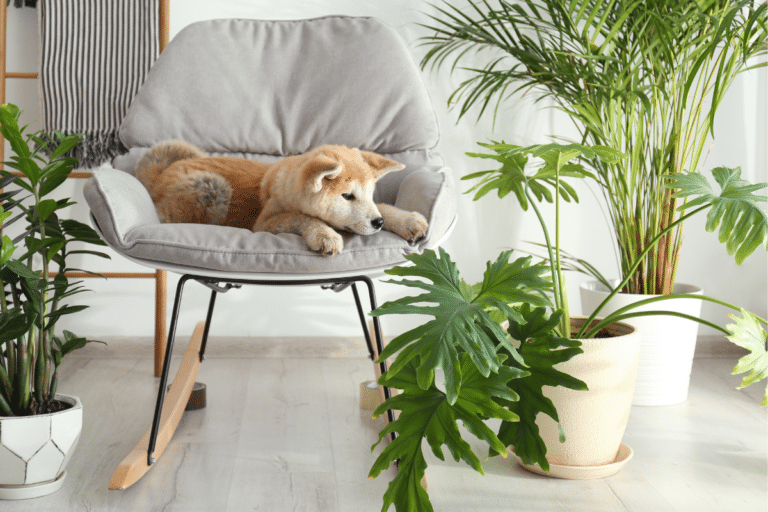Blog Common House Plants That Are Toxic to Dogs
You likely know that you shouldn’t give your dog chocolate and certain other foods, but you may not realize how many things in your home can pose a danger to your pup. Familiarize yourself with the most common toxic plants for dogs so you know to keep them out of your house.
Common House Plants That Are Toxic to Dogs

Aloe Vera
Given its reputation for healing, you may be surprised to learn that aloe vera is one of the many dangerous houseplants you may not realize is bad for your pup.
If you give your dog aloe juice, though, don’t worry. This plant is only dangerous if your dog chews on it, and it is just mildly toxic. Doing so can mean he ingests anthraquinone glycosides, toxins that can lead to vomiting and diarrhea.

Bird of Paradise
The bird of paradise looks pretty, but it is dangerous for your dog.
After eating it, your dog will likely show nausea, drowsiness, and vomiting within just 20 minutes.

Elephant Ear
Elephant ear or caladium is another one of the toxic plants for dogs. It’s a popular houseplant because of its colorful leaves.
The issue is that this plant has calcium oxalate crystals, which are also found in some of the other dangerous houseplants on this list.
Those calcium oxalate crystals are sharp and can irritate your pup’s mouth. They can also lead to severe burning and swelling of his mouth and tongue. Although rare, there is also a possibility that your dog will have trouble breathing or even die after eating this plant.

Philodendron (and Monstera)
Starting with one of the heaviest hitters, Philodendron is a large genus of tropical plant, very popular for use indoors due to its wide variety of growing habits, leaf shapes and colors. This genus of plants is mildly toxic to humans, and toxic to both dogs and cats. Symptoms of exposure include: Oral irritation, pain and swelling of mouth, tongue and lips, excessive drooling, vomiting, and difficulty swallowing.

Ivy (including English ivy and Golden Pothos)
When you take your canine to dog-friendly West Palm Beach restaurants, keep an eye out for decorative ivy, and do the same in your house. While ivy is pretty, many varieties are toxic to dogs.
If your pup were to eat these dangerous houseplants, he may be exposed to polyacetylene compounds and triterpenoid saponins. These can lead to abdominal pain, diarrhea, vomiting, and excessive drooling.

Jade Plant
If you are bad with plants, you may want to grow jade plant, as it is very hard to kill and can live for a century. The issue is that this is among the toxic plants for dogs.
While experts aren’t sure which specific toxins are to blame, they do know that dogs can develop slow heart rate, vomiting, and depression after eating the plant.

ZZ Plant
ZZ plant is popular because it doesn’t need a lot of light, so you can place it nearly anywhere in your house.
Unfortunately, these dangerous houseplants have calcium oxalate crystals. Those can irritate your canine’s mouth and cause swelling as well as respiratory issues. The plant can also lead to diarrhea and vomiting.
Conclusion – House Plants That Are Toxic to Dogs
Savvy dog owners will want to avoid keeping any of the above dangerous houseplants in their homes. If you and your pup visit someone’s house, make sure to check for those toxic plants or keep an eye on your pup so he doesn’t eat them. It can also be wise to wise to take your dog through some basic dog training courses in West Palm Beach to teach him not to eat any plants at all. If he doesn’t eat any, he won’t eat the toxic ones.
Sources:

